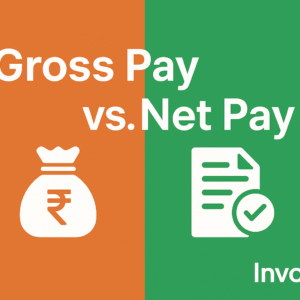When someone mentions ‘secure investment’ in India, one of the first things that comes to mind is the Fixed Deposit—commonly called FD. But what is a fixed deposit, and is it truly better than a regular savings account? Dive into the details, unravel the critical differences, and discover how FD investment has become a popular choice for Indians striving for financial stability and smarter returns.
What is a fixed deposit
A fixed deposit (FD) is a type of investment offered by banks and non-banking financial companies (NBFCs) in India. In an FD, a certain amount of money is locked in for a fixed period at a pre-decided interest rate. Once the deposit is made, it cannot be withdrawn until the period ends, also called ‘maturity’. If you’re wondering what is fixed deposit, it’s essentially a safe and structured way to grow your savings, offering a fixed return with minimal risk.
Example: Suppose Rs. 1,00,000 is invested in a fixed deposit for 1 year, at an interest rate of 7% p.a. At the end of the year, you receive your principal amount plus Rs. 7,000 earned as interest.
How does a fixed deposit work
– Deposit a Lump Sum: Place a specific amount of money in an FD account.
– Choose Tenure: Tenure can range from 7 days to 10 years.
– Get Fixed Returns: Interest rate is locked at the beginning and remains unaffected by any market fluctuations.
– Payout Options: Choose ‘cumulative’ (get all interest upon maturity) or ‘non-cumulative’ (get monthly/quarterly interest payouts).
– Withdrawal: Funds are only accessible after maturity, unless withdrawn prematurely with a penalty.
Savings account
A savings account, in contrast to an FD, is meant for regular transactions. Money can be deposited or withdrawn as needed. Banks offer a lower interest rate—usually in the range of 2.5%–4% per annum.
Example: Keeping Rs. 1,00,000 in a savings account for one year at 3% interest earns only Rs. 3,000.
FD investment vs savings account: unpacking the differences
Let every detail matter when considering where to put hard-earned money.
- Interest Rates and Earnings
An FD offers almost double (sometimes more) the interest rate compared to a savings account. Over time, this leads to significantly more earnings. For Rs. 1,00,000, the extra Rs. 4,000 earned in an FD (versus a savings account) showcases the power of compounding and higher rates.
- Lock-In Period and Liquidity– Fixed Deposit: Money is locked for a pre-decided period. Premature withdrawals often incur penalties and lower interest rates.
– Savings Account: Highly liquid. Funds available at any time via ATM, cheque, or online transfer.
- Risk and Security
– FDs are secure: The Deposit Insurance and Credit Guarantee Corporation (DICGC) insures bank FDs up to Rs. 5 lakh per depositor, per bank.
– Savings accounts enjoy the same protection.
Both products are considered safe, but FDs add the benefit of a fixed, guaranteed return.
- Tax Efficiency
Interest from both FDs and savings accounts is taxable. However, up to Rs. 10,000 earned from savings account interest in a year can be excluded under Section 80TTA of the Income Tax Act. For FDs, interest above Rs. 40,000 (Rs. 50,000 in some cases) in a financial year attracts TDS (Tax Deducted at Source).
- Flexibility and Suitability
– FDs: Suits those aiming for a lump-sum, predictable return over a fixed period. Various tenures can be chosen as per goals—child’s education, wedding, or buying a vehicle.
– Savings: Ideal for everyday needs, emergencies, and those who require on-tap cash.
How to open a fixed deposit in India
Setting up an FD is simple—either through internet banking or by visiting a branch.
Steps:
- Select deposit amount and tenure.
- Choose payout mode (cumulative/non-cumulative).
- Submit KYC documents if needed.
- Deposit funds.
Digital banking has enabled paperless, instant fixed deposits through mobile apps or net banking.
Calculating FD returns:
Here’s what a smart FD investment can look like:
Scenario: Deposit Rs. 5,00,000 in an FD for 3 years at 7% annual interest, compounded quarterly.
Maturity Amount Formula:
A = P(1 + r/n)^(nt)
Where:
P = Rs. 5,00,000; r = 7% (0.07); n = 4 (quarterly); t = 3 years
A = 5,00,000 (1 + 0.07/4)^(43)
A = 5,00,000 (1 + 0.0175)^12
A = 5,00,000 (1.0175)^12
A ≈ 5,00,000 1.23144
A ≈ Rs. 6,15,720
Interest earned: Rs. 6,15,720 – Rs. 5,00,000 = Rs. 1,15,720 in 3 years
Same money kept in a savings account at 3.5% p.a. for 3 years would fetch:
Interest = Principal × Rate × Time / 100
= 5,00,000 × 3.5 × 3 / 100 = Rs. 52,500
The FD earns more than double what a savings account does for the same period and amount.
Breaking down the pros and cons
Fixed Deposits:
– Pros: High returns, safe, predictable, multiple tenure options, suitable for discipline.
– Cons: Liquidity issues, premature withdrawal penalty, taxable interest.
Savings Account:
– Pros: High liquidity, frequent access, branch and ATM network, minimum balance required.
– Cons: Lower returns, may lose out on compounding benefits.
When does an FD outperform a savings account
– When funds are earmarked for specific future goals.
– When the aim is to grow idle money at low risk.
– When market volatility is a concern and steady returns matter.
Things to know before FD investment
– Interest rate is fixed; it doesn’t increase if bank rates rise during your FD’s tenure.
– Breaking an FD early usually brings lower returns and possible penalty charges.
– Tax Deducted at Source applies if total FD interest crosses the annual exemption limit.
– Multiple FDs with different maturity dates can build a “ladder” for periodic liquidity.
– Always check official bank/financial institution websites for the latest FD interest rates and terms.
Summary
A FD investment stands as one of the most trusted and straightforward investment choices in India. Unlike a regular savings account, an FD locks in money for a fixed term at a pre-agreed interest rate, ensuring steady and often higher returns. For instance, investing Rs. 1,00,000 in an FD for a year at 7% interest yields nearly double the amount earned in a savings account, which typically offers just 2.5–4%. The discipline of not touching the investment before maturity further boosts returns and curbs impulsive spending.
While savings accounts offer the flexibility of withdrawing cash anytime, they come with lower interest rates and, consequently, slower wealth growth. FDs, on the other hand, empower savers to maximise their earnings with disciplined, risk-free growth, all while enjoying the peace of mind that comes with DICGC insurance protection (up to Rs. 5 lakh per depositor, per bank). Tax structure varies—interest from both products is taxable, but savings account interest up to Rs. 10,000 is exempt under Section 80TTA.
An FD is not just about higher interest; it’s about making money work smarter, not harder. Whether it is saving for big life moments or simply letting surplus funds grow, FDs can be a powerful component in a balanced financial plan. Remember, each method serves a unique purpose, and it’s wise to align your investment choices with personal financial goals and liquidity needs.
Disclaimer:
Investment decisions should be made after careful evaluation of all benefits, risks, and conditions associated with financial products in the Indian market. Always check current rates and terms on official financial institution websites before proceeding with any investment.




